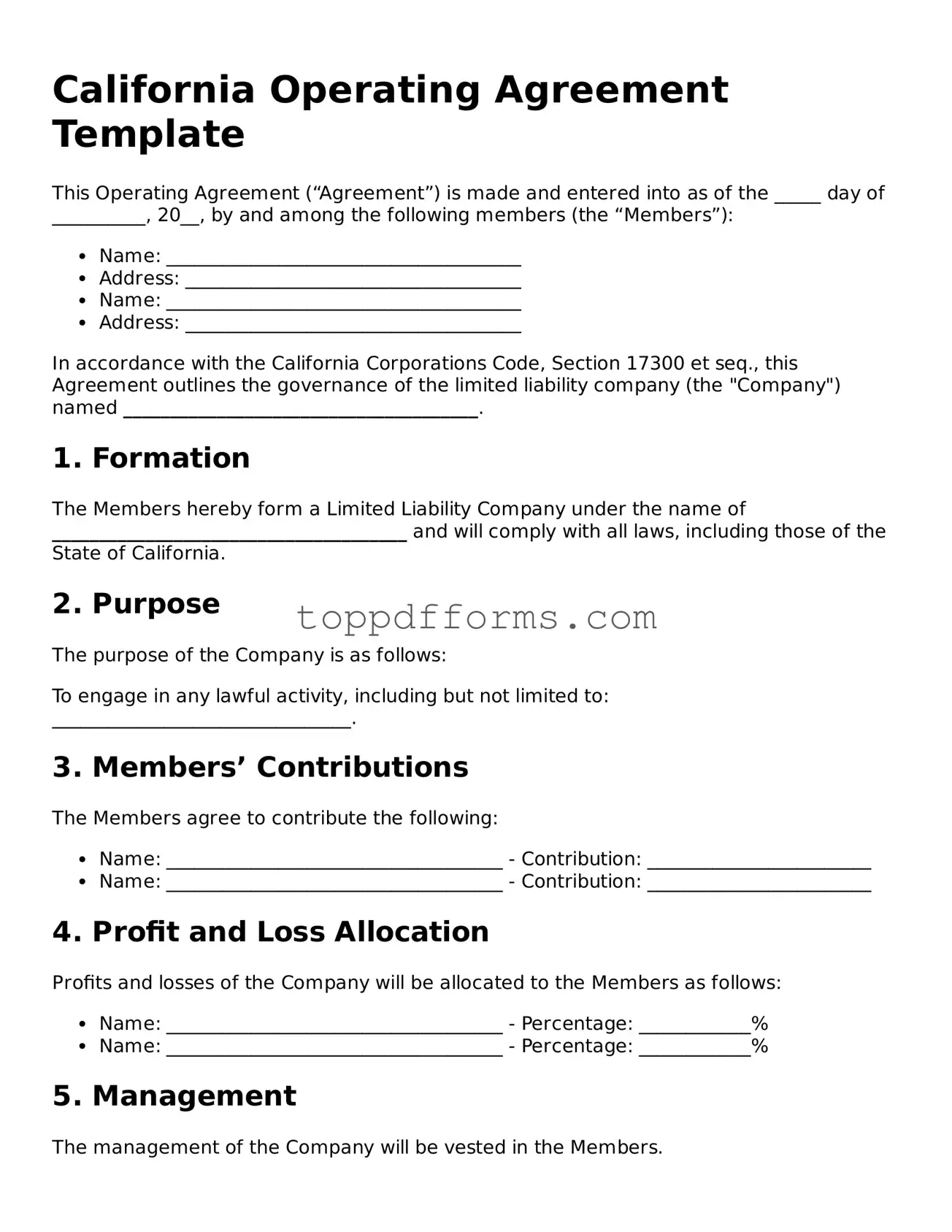What is a California Operating Agreement?
A California Operating Agreement is a legal document that outlines the management structure and operating procedures of a limited liability company (LLC) in California. It serves as a foundational blueprint for how the LLC will operate, detailing the roles and responsibilities of its members, how profits and losses will be distributed, and how decisions will be made. While not required by California law, having an Operating Agreement is highly recommended as it helps prevent misunderstandings and disputes among members.
Do I need an Operating Agreement if I am the only member of my LLC?
Even if you are the sole member of your LLC, having an Operating Agreement is beneficial. It formalizes your business structure and clarifies your rights and responsibilities. This document can protect your limited liability status by demonstrating that your LLC is a separate entity from your personal affairs. It also provides a clear plan for how the business will operate and what will happen in various scenarios, such as if you decide to bring in new members or sell the business.
What should be included in a California Operating Agreement?
Your Operating Agreement should cover several key areas. Start with the basic information about the LLC, including its name and address. Next, outline the management structure—will it be member-managed or manager-managed? Include details on how profits and losses will be distributed among members. Also, address how decisions will be made, what happens if a member wants to leave, and the process for adding new members. Finally, consider including provisions for dispute resolution to handle conflicts that may arise.
How do I create a California Operating Agreement?
Creating a California Operating Agreement can be straightforward. You can draft one from scratch or use templates available online. Ensure the document reflects your specific business needs and complies with California laws. It’s wise to consult with a legal professional to review the agreement before finalizing it. Once completed, all members should sign the document, and each member should keep a copy for their records. Remember, while the Operating Agreement does not need to be filed with the state, it is a crucial internal document for your LLC.
